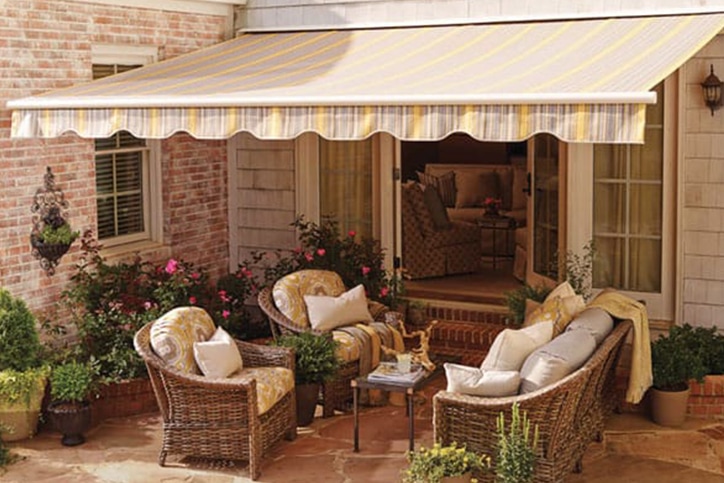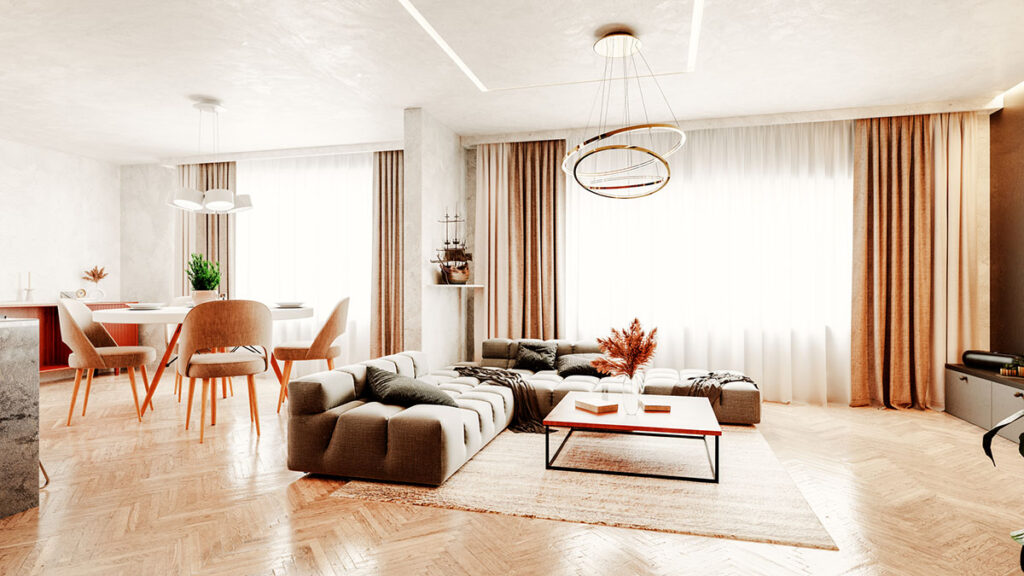When choosing curtains for your living room, bedroom, or home office, there’s no one-size-fits-all solution. Beyond just selecting the curtain style, fabric, and colour, the length of the curtains is also a crucial factor that can dramatically affect your room’s ambiance and look.
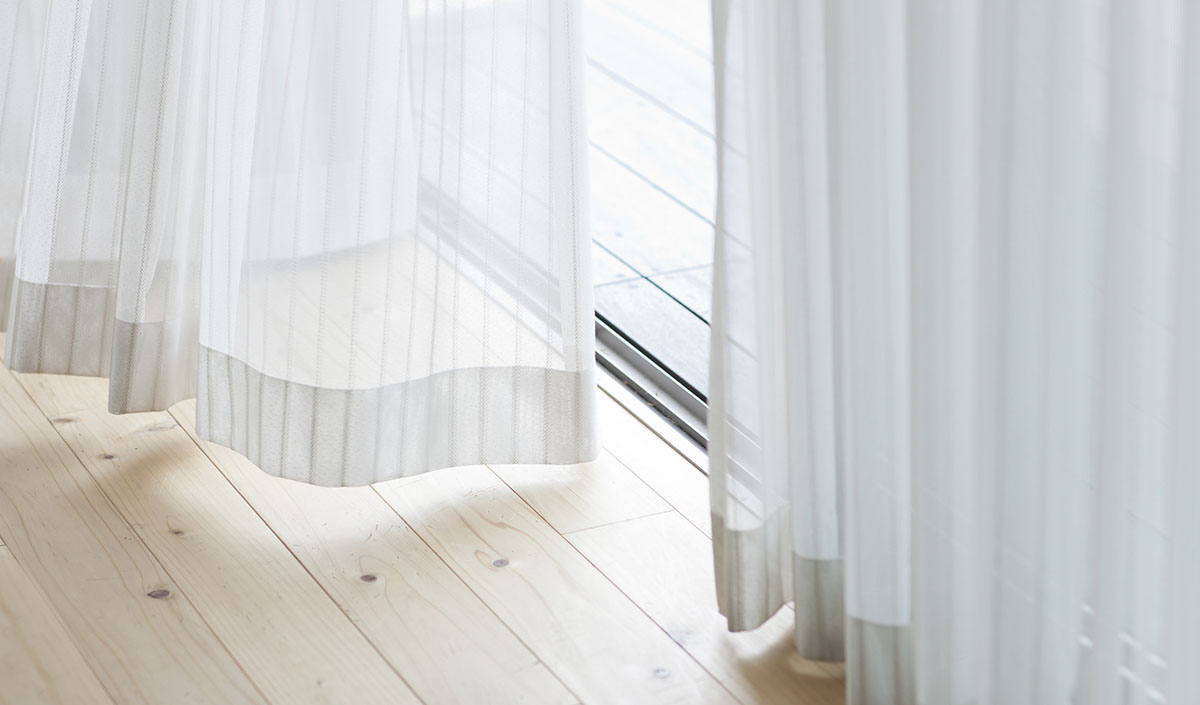
A common question that homeowners ask when selecting curtains for their rooms is, “Should curtains touch the floor?” The answer depends on several factors, including the look you want to achieve, the specific room, and practical considerations like ease of cleaning and maintenance.
This blog will cover the different curtain lengths, how to determine if your curtains or drapes should touch the floor, and step-by-step instructions on how to hang and measure them effectively.
A Brief Guide on the Different Types of Floor-Length Curtains
The standard curtain size typically ranges from 63 to 144 inches in length, with widths usually between 40 to 60 inches per panel. But for floor-length curtains, the length generally starts at 84 inches and can extend up to 120 inches or more.
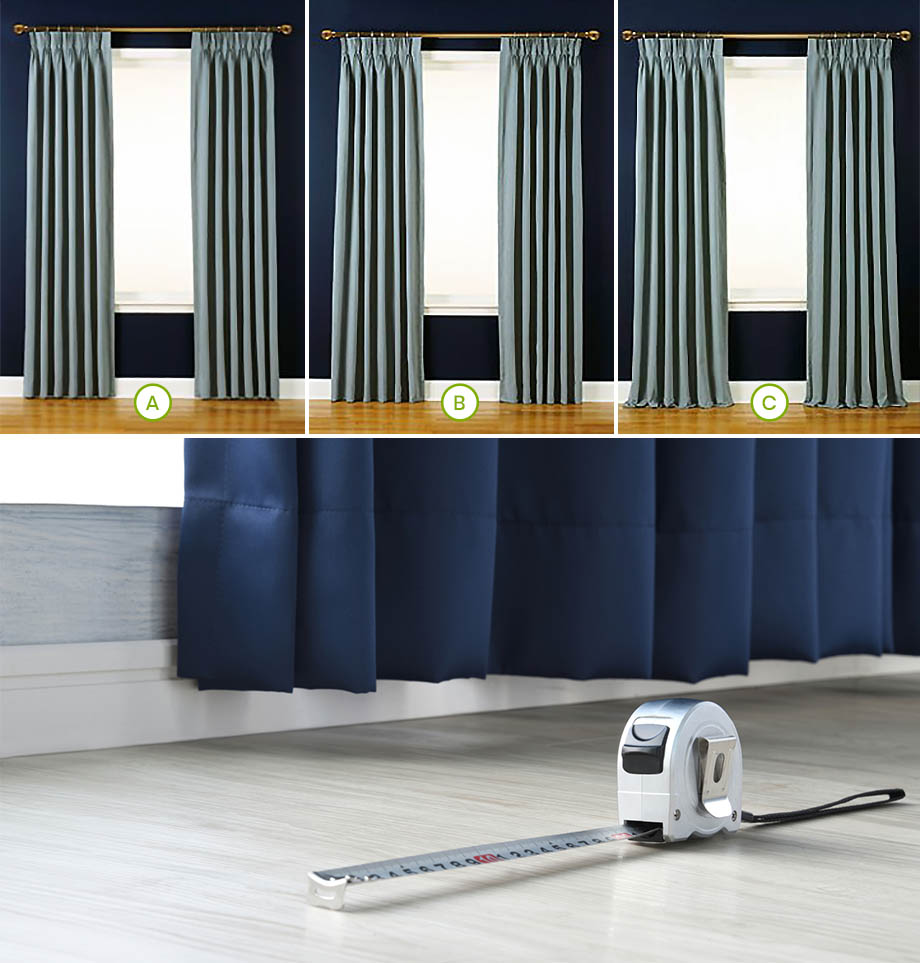
There are three main types of floor-length curtains, namely hovering, breaking, and puddling. Here are some key details about each style:
1. Hovering Curtains
As the name suggests, this type of floor-length curtain usually leaves a gap of about half an inch to an inch, making it hang just above the floor. This makes it easier to maintain as the fabric doesn’t touch the floor.
Hovering curtains are a popular choice for contemporary and transitional interiors. This style is also ideal for high-traffic areas such as living rooms or hallways, where the slight gap from the floor makes vacuuming or sweeping more convenient.
2. Breaking Curtains
Breaking curtains are a type of floor-length curtain that slightly touches the floor, this causes the fabric to “break” or bend at the bottom. It offers a balanced option, as it falls somewhere between a hover and a puddle. The break in the fabric adds a bit of texture and dimension to the room, making the curtains an understated focal point.
With light fabrics and soft headers, these draperies offer a casual feel, while thicker fabrics and pleated headers create a formal look. They’re recommended for low-traffic spaces like bedrooms and formal dining rooms.
3. Puddling Curtains
Puddling curtains are the most dramatic and bold floor-to-ceiling curtain option. It extends beyond the floor, causing the fabric to pool or “puddle” on the ground.
Depending on your desired effect, you can choose from a minimal puddle (an extra one to three inches for a cozy feel), a moderate puddle (three to six inches for added formality), or an opulent puddle (six to eight inches for the ultimate in glamour).
This type of floor-length curtain is also incredibly high maintenance, requiring regular cleaning to prevent dust and debris from collecting on the fabric. Pet hair and allergens can easily accumulate on the excess fabric, which makes this type of floor-length curtain more suitable for low-traffic areas and formal rooms.
When to Choose Full-Length Curtains
Adding full-length curtains to your space is a great way to elevate the ambiance, as it provides an elegant and sophisticated touch to any room. Additionally, adding floor-length curtains provides a seamless, floor-to-ceiling flow that can make your room feel taller and more spacious.
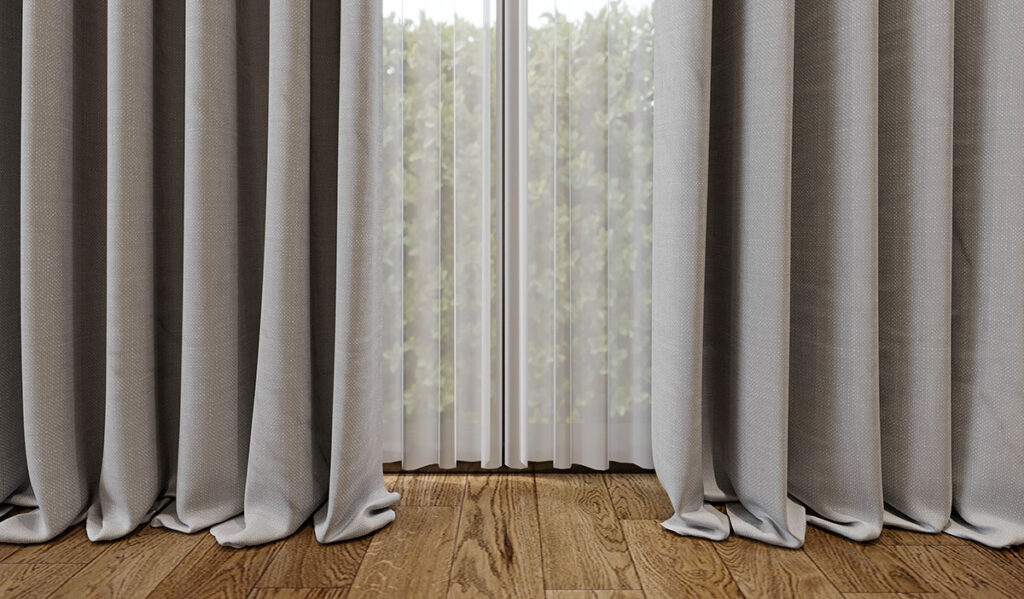
To determine if floor-to-ceiling curtains are the ideal choice for your space, make sure to consider the following factors:
- The height of your ceiling: High ceilings are complemented by floor-to-ceiling curtains, as they draw the eye upward and enhance the room’s sense of spaciousness. In rooms with lower ceilings, this style can create the illusion of height but may also feel overpowering if not done carefully.
- The size and placement of your windows: Floor-to-ceiling curtains are especially effective for large, expansive windows, as they provide full coverage and emphasize the window’s size. For smaller windows, this style might look out of scale and could block natural light, reducing the room’s brightness.
- The overall style you want to achieve: Floor-to-ceiling curtains are ideal for creating a dramatic, elegant look, often associated with formal or luxurious interiors. If you prefer a more minimalist or casual vibe, you might prefer a different curtain style that better aligns with your taste.
Additionally, take into account the amount of natural light you prefer, the level of privacy you need, and whether the room sees high foot traffic, which might affect your choice of fabric and curtain style.
When Not to Choose Full-Length Curtains
Although adding full-length curtains is a great way to transform a space, it is not always the best choice.
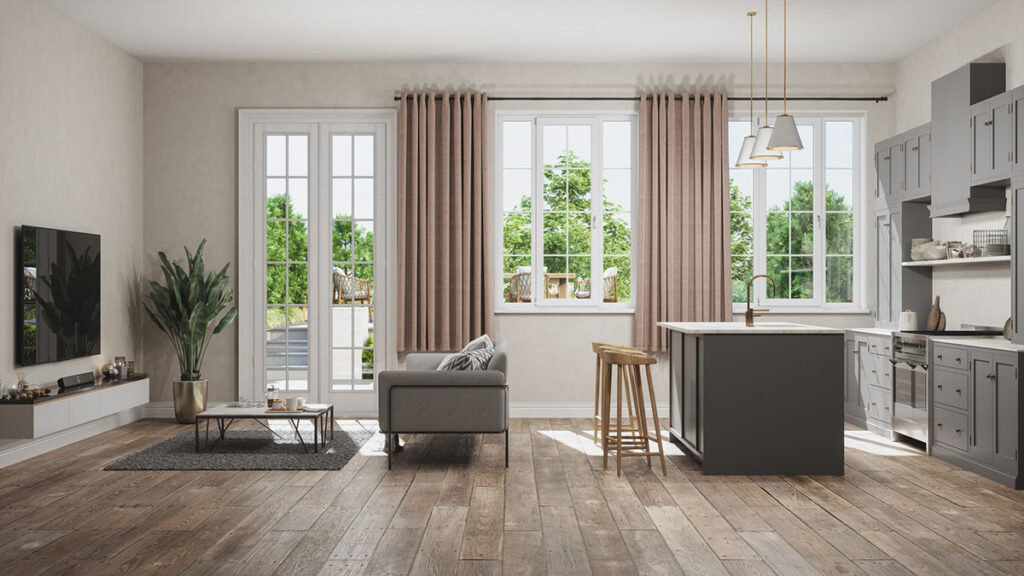
If your room has low ceilings, these curtains can draw attention to the limited vertical space, making the room feel more confined. Additionally, full-length curtains may be an impractical option in high-traffic areas like kitchens, bathrooms, or children’s playrooms.
Homes with pets or small children might also find full-length curtains less ideal, as the excess fabric can be easily tugged, dirtied, or damaged. In these cases, opting for shorter curtains, shades, or other window treatments might be a more functional and visually balanced choice.
How to Effectively Hang Floor-Length Curtains
Knowing how to hang floor-length curtains effectively is the key to ensuring they hang beautifully. Before purchasing them, measure the height from the floor to the curtain rod to ensure that the curtains you plan to buy hang just right. Don’t forget to measure the size of your windows as well.
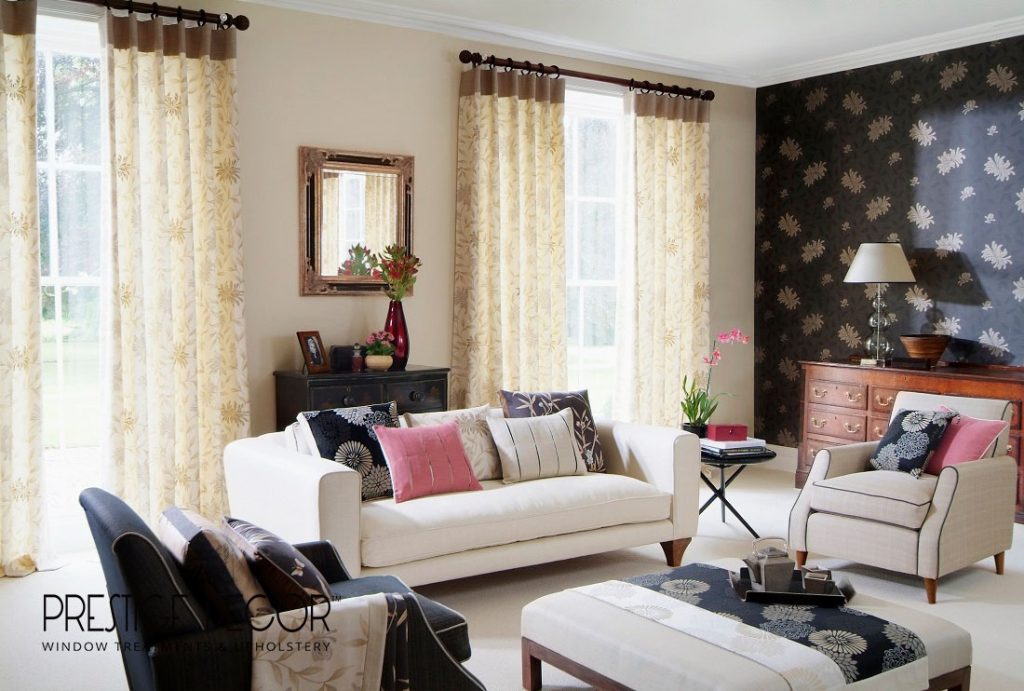
Position the rod higher than the window frame to elongate the appearance of the room and ensure the curtains are wide enough to provide full coverage without being too taut. Using curtain rings or grommets can help the fabric drape more naturally while also making it easier to open and close the curtains smoothly.
After hanging your curtains, adjust the folds to ensure they fall evenly, giving the room a polished and well-balanced look.
Get Beautiful Floor-to-Ceiling Curtains for Your Space
At Prestige Decor, our design experts will assist you in finding the ideal floor-to-ceiling curtains that perfectly match your home’s style and needs. With over 250,000 high-quality drapery fabrics to choose from, we ensure that you’ll find the perfect material to transform your space.
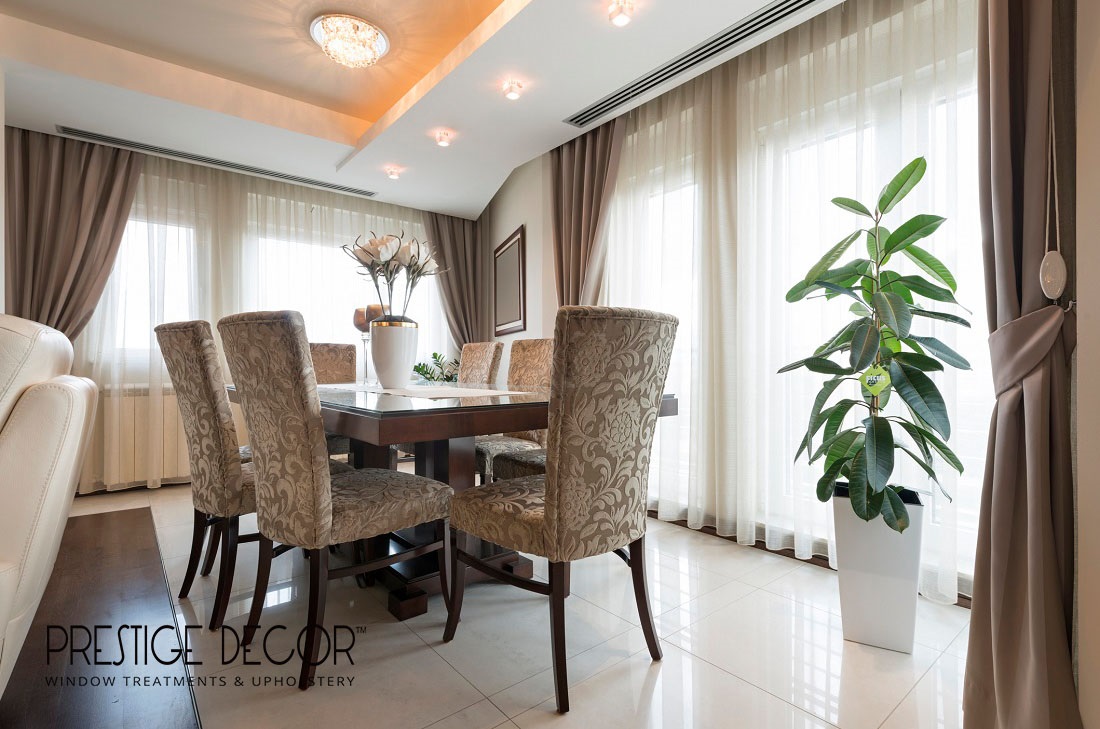
We also provide a wide variety of curtain hardware to choose from, including elegant curtain rods, finials, brackets, and tiebacks that pair beautifully with floort-to-ceiling curtains.
From consultation to installation, our team is dedicated to ensuring that your window treatments not only look stunning but functional and practical as well.
